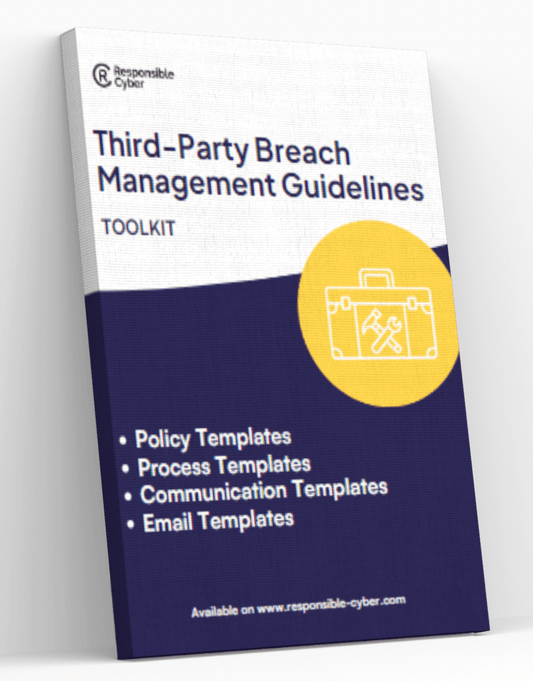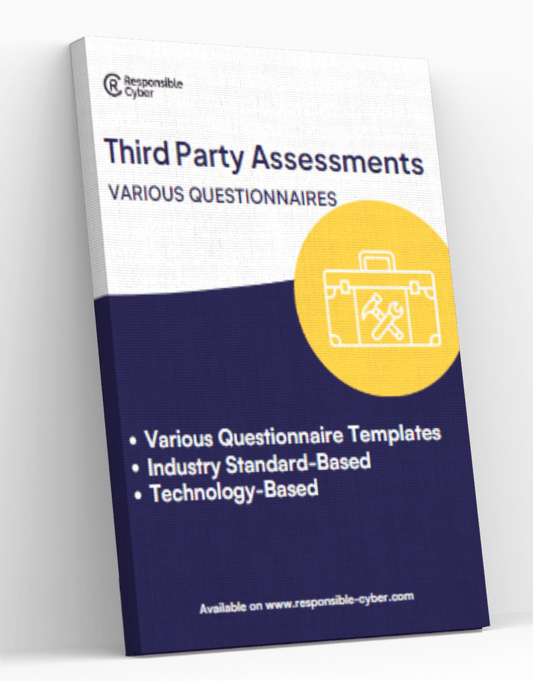Comprehensive Guide to Third-Party Risk Management (TPRM) in the Context of ISO 27001: 2013 vs. 2022

As organizations increasingly rely on third-party vendors and service providers, managing the risks associated with these relationships has become critical. Third-Party Risk Management (TPRM) is a structured approach designed to identify, assess, manage, and mitigate risks arising from third-party engagements. In the context of ISO 27001, a globally recognized standard for information security management, TPRM plays a vital role in ensuring compliance and protecting sensitive information. This article explores the evolution of TPRM in ISO 27001, comparing the 2013 and 2022 versions, and provides insights into effective implementation strategies.
What is Third-Party Risk Management (TPRM)?
Third-Party Risk Management (TPRM) involves the systematic process of evaluating and mitigating risks posed by external entities that provide goods or services to an organization. These risks can include cybersecurity threats, data breaches, compliance violations, and operational disruptions. A robust TPRM framework helps organizations safeguard their data, ensure regulatory compliance, and maintain business continuity.
Understanding ISO 27001: 2013 vs. 2022
ISO 27001 is an international standard for managing information security. It provides a framework for establishing, implementing, maintaining, and continuously improving an Information Security Management System (ISMS). The standard has undergone significant updates, with the most recent version released in 2022. These updates reflect the evolving cybersecurity landscape and the need for enhanced risk management practices.
Key Differences Between ISO 27001: 2013 and ISO 27001: 2022
1. Enhanced Focus on Risk Management
- ISO 27001: 2013: Emphasized risk assessment and treatment, with a focus on identifying and managing information security risks within the organization.
- ISO 27001: 2022: Places a greater emphasis on risk management, including the need to address risks associated with third-party vendors. The 2022 version introduces more detailed requirements for assessing and managing third-party risks, reflecting the growing importance of TPRM in the modern business environment.
2. Updated Control Objectives and Controls
- ISO 27001: 2013: Included Annex A, which outlined 114 controls grouped into 14 categories. These controls provided a baseline for managing information security risks.
- ISO 27001: 2022: The updated version reorganizes the controls into 93 controls grouped into 4 categories: Organizational, People, Physical, and Technological. This reorganization aims to streamline the controls and make them more relevant to contemporary security challenges. The 2022 version also integrates new controls related to cloud services, threat intelligence, and data leakage prevention.
3. Integration with Other Standards
- ISO 27001: 2013: Primarily focused on information security management within the context of ISO 27000 series standards.
- ISO 27001: 2022: Promotes greater integration with other management system standards, such as ISO 9001 (Quality Management) and ISO 22301 (Business Continuity Management). This holistic approach helps organizations align their information security management with broader business objectives and regulatory requirements.
TPRM in the Context of ISO 27001: 2013 vs. 2022
Risk Assessment and Treatment
ISO 27001: 2013
- Focused on identifying and managing information security risks within the organization.
- Required organizations to conduct regular risk assessments, identify potential threats, and implement controls to mitigate risks.
ISO 27001: 2022
- Expands the scope of risk assessment to include third-party risks. Organizations must assess the risks associated with third-party vendors and service providers, considering factors such as data access, processing, and storage.
- Introduces more detailed requirements for documenting and monitoring third-party risks, ensuring that organizations maintain a comprehensive view of their risk landscape.
Control Implementation and Monitoring
ISO 27001: 2013
- Included specific controls related to third-party relationships, such as A.15 (Supplier Relationships) and A.16 (Information Security Incident Management).
- Emphasized the need for contractual agreements and monitoring of third-party performance.
ISO 27001: 2022
- Updates and expands controls related to third-party risk management. The new structure of controls in Annex A includes specific controls for managing third-party risks more effectively.
- Requires organizations to implement a more proactive approach to monitoring third-party performance, including regular audits, performance evaluations, and incident response procedures.
Integration with Business Processes
ISO 27001: 2013
- Focused on aligning information security management with business processes and objectives.
- Emphasized the importance of top management involvement and support for the ISMS.
ISO 27001: 2022
- Strengthens the integration of information security management with broader business processes, including supply chain management and vendor risk management.
- Encourages organizations to adopt a holistic approach to risk management, ensuring that third-party risks are considered in strategic planning and decision-making.
Implementing TPRM in Line with ISO 27001: 2022
Implementing a robust TPRM framework in line with ISO 27001: 2022 requires a strategic approach and careful planning. Here are some steps to consider:
1. Conduct a Comprehensive Risk Assessment
Begin by conducting a comprehensive risk assessment that includes third-party vendors and service providers. Identify potential risks associated with each vendor, considering factors such as data access, processing, storage, and regulatory compliance.
2. Develop a TPRM Policy
Create a detailed TPRM policy that outlines the organization's approach to managing third-party risks. This policy should include criteria for vendor selection, risk assessment procedures, contractual requirements, and monitoring processes.
3. Implement Security Controls
Based on the risk assessment, implement appropriate security controls to mitigate identified risks. This may include measures such as data encryption, access controls, regular audits, and incident response procedures.
4. Monitor and Review
Continuously monitor third-party performance and review the effectiveness of implemented controls. Conduct regular audits and performance evaluations to ensure that vendors comply with contractual agreements and security requirements.
5. Foster Collaboration
Foster collaboration between internal teams and third-party vendors. Ensure that all parties understand their roles and responsibilities in managing risks and maintaining compliance with ISO 27001: 2022.
6. Train Employees
Educate employees about the importance of TPRM and their roles in the process. Regular training sessions help maintain a security-aware culture and ensure that staff are knowledgeable about compliance obligations.
7. Document Compliance Efforts
Keep thorough documentation of all compliance efforts, including risk assessments, security controls, performance evaluations, and incident response actions. Proper documentation is essential for demonstrating compliance during audits.
Benefits of Implementing TPRM in Line with ISO 27001: 2022
Implementing TPRM in line with ISO 27001: 2022 offers numerous benefits:
1. Enhanced Security
By addressing third-party risks comprehensively, organizations can significantly enhance their overall security posture and protect sensitive data from breaches and cyber threats.
2. Improved Compliance
Aligning TPRM with ISO 27001: 2022 ensures compliance with international standards and regulatory requirements, reducing the risk of legal penalties and enhancing the organization's reputation.
3. Increased Operational Resilience
Proactive risk management and continuous monitoring enhance the organization's ability to withstand and recover from disruptions caused by third-party failures.
4. Stronger Vendor Relationships
Clear expectations and ongoing monitoring foster stronger, more transparent relationships with vendors, leading to improved collaboration and performance.
5. Competitive Advantage
Organizations with robust TPRM practices can differentiate themselves in the market, attracting more customers and partners who value security and compliance.
Conclusion
The evolution of ISO 27001 from the 2013 to the 2022 version reflects the growing importance of Third-Party Risk Management (TPRM) in the modern business environment. The updated standard places greater emphasis on managing third-party risks, integrating TPRM with broader business processes, and ensuring continuous compliance with international standards.
By implementing a robust TPRM framework in line with ISO 27001: 2022, organizations can enhance their security posture, ensure compliance, and protect sensitive data from potential threats. The benefits of a comprehensive TPRM strategy extend beyond risk mitigation, fostering stronger vendor relationships, increasing operational resilience, and providing a competitive edge in the market.
As the digital landscape continues to evolve, the importance of effective TPRM will only grow. Organizations that proactively manage third-party risks will be better positioned to navigate the complexities of the modern business environment and achieve long-term success. Embracing the principles of ISO 27001: 2022 in TPRM is a critical step toward building a secure, resilient, and compliant organization.







